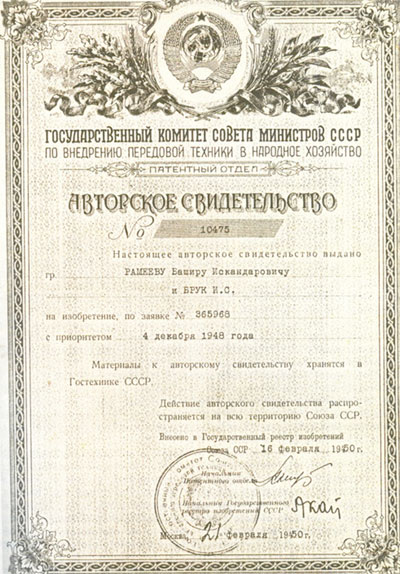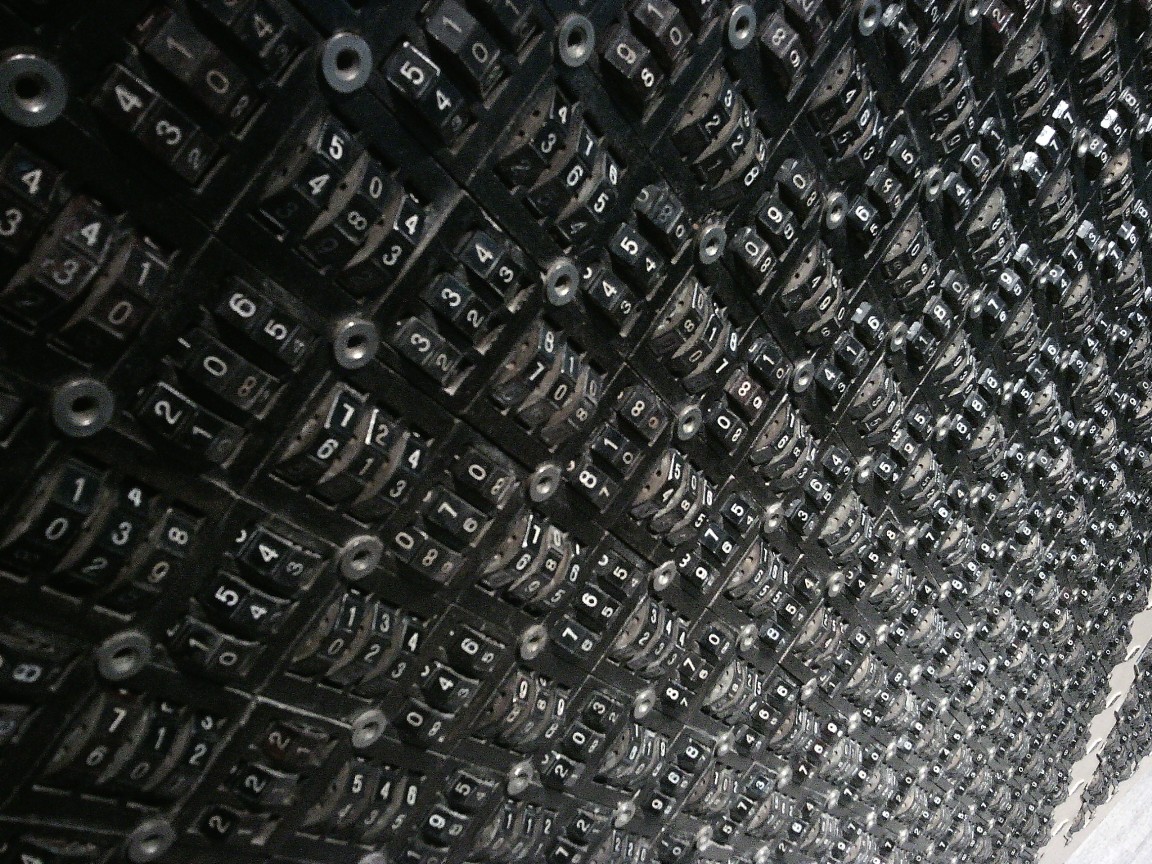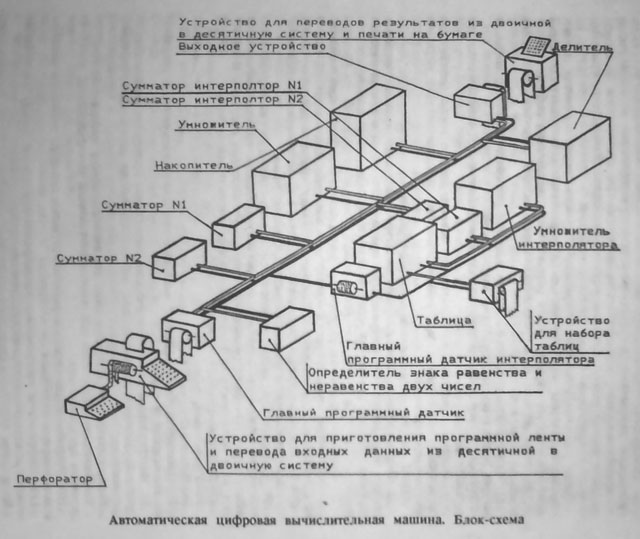Informatics Day in Russia: the history of the first project of an automatic computer

A small electronic counting machine
On December 4, we celebrate Computer Science Day in Russia. But what is this holiday, how did it come about? It is interesting to understand this if you know that the birthday of Russian informatics is considered to be December 4, 1948 — that is, 14 years before the term “informatics” itself was proposed by Soviet scientist Alexander Kharkevich.
One of the first projects of domestic computing technology is associated with the names of two inventors - Isaac Brook and Bashir Rameyev. On December 4, 1948, the State Committee of the USSR Council of Ministers on the implementation of advanced technology in the national economy registered the invention of scientists: a digital electronic computer.
To this event, all active participants in the progress in the field of computers led character traits that are still in demand among IT professionals - curiosity, the desire for new knowledge and self-education, the desire to improve existing technologies. Let's remember how it was, because even after 70 years the story about the car and the motivation remains relevant.
Two inventors

The copyright certificate on the “Automatic digital electronic machine”
Isaac Brooke began to be engaged in scientific research in his student years, and devoted his thesis to new methods of regulating asynchronous motors. After studying, Brooke participated in the creation of a new series of asynchronous motors and in solving problems of parallel operation of electric generators.
In 1935, Brooke began research on the calculation of the regimes of powerful energy systems. To simulate them, he created an AC calculating table — an analog computer. A year later, the scientist carried out work for the Commission of Applied Mathematics and the group of technical mechanics of the Branch of Technical Sciences of the USSR Academy of Sciences on the analysis of machines for solving differential equations that existed in the world at that time.

Mechanical integrator for solving differential equations in the oil industry. Source
At that time, the scientist already understood that "thinking" machines became an urgent need, and there are all the necessary elements for their creation. Brooke knew about the project of mechanical integratorbuilt by Vanover Bush at the Massachusetts Institute of Technology is an example of a “successful” machine used in the calculation of the trajectory of the firing of ship guns.
In 1939, under the leadership of Brooke, a mechanical integrator was created, which allows solving differential equations up to the 6th order. There were no such computers in the USSR yet.
The complexity of the task is easy to imagine according to the description of the device: more than one thousand gears, racks with bridges and holes for the axes were located in a hall of about 60 square meters. m, and the introduction of the conditions of the problem, which consisted in installing gears to certain places, occupiedfrom several days to several weeks. The photograph of the integrator has been preserved and is currently on display at the electronic computers of the Polytechnic Museum.
During the war years, Brooke continued to engage in "smart" machines: he invented the synchronizer of an aircraft gun, which allowed him to shoot through the disk of a rotating propeller of an aircraft.
After the war, the scientist devoted almost all his time to computing devices. He created a device for the approximate solution of the Poisson-Laplace differential equations, an electric minimizer, and an electronic frequency controller. There was more and more understanding that in order to increase the accuracy and speed of work, it was necessary to switch to electronic computers.
At the same time, Brooke began to cooperate with the engineer Bashir Rameyev (hereinafter the well-known designer of computers of the Ural series). Rameyev was expelled from the Moscow Energy Institute as “the son of an enemy of the people,” which did not prevent him from engaging in self-education and getting a job at the Central Research Institute of Communications.
During World War II, the inventor proposed a method for detecting darkened objects from an airplane by infrared radiation passing through curtains, and also invented a relay device to turn on loudspeakers in the event of an air-raid alarm.
At the beginning of 1947, Rameyev learned that the world's first electronic computer, ENIAC, was created in the United States, and became interested in this field of science. Rameyev turned to Brooke and in May 1948 he was accepted as a design engineer at the Electrical Systems Laboratory of the Power Engineering Institute of the USSR Academy of Sciences.
Car history
The project of an automatic computer was presented by Brooke together with Rameyev in August 1948. A few months later, in October, they presented detailed proposals for organizing a laboratory at the Academy of Sciences for the development and construction of a digital computer.

In the project, which at that time was only a document (description on 16 pages and drawings on three pages), even without a prototype of the device, a description of the machine’s concept was given, arithmetic operations in the binary number system were determined, and the operation of the machine from the main program sensor reading the program recorded on punched tape. The program was entered into the machine, and the results of the calculations were issued on another tape, and the obtained information was again entered into the machine for the next cycle.
Author's certificate number 10475 of December 4, 1948, issued in the name of I.S. Brooke and B.I. Rameeva State Committee of the USSR Council of Ministers on the introduction of advanced technology in the national economy, was the first in the USSR registered act of invention in the field of electronic computing technology.
In just one year of joint work, Brooke and Rameev prepared and sent more than 50 applications for the invention of various computer components. Some were even returned to them, since the State Committee for Inventions did not have enough expert experts in this new industry. Among other things, the inventors proposed a method for converting numbers from the decimal system to the binary one and vice versa, and also came to the conclusion that not only information but also a program can be stored in the machine’s memory.
Later, Rameev used these developments to create the Strela machine, the first computer developed in industrial production in the USSR. Under the leadership of Rameyev, an arithmetic unit of the machine and a memory on a magnetic drum were developed. For the element base were first selected tubes, rather than a relay.
Brooke's career was no less successful. He became the first director of the Institute of Electronic Control Machines (INEUM) of the USSR AS, where under his leadership small digital computers M-1, M-2, M-3, M-4, M-5, M-7-200 and M-7-800.
Other projects
Unable to study in detail the American projects, Soviet scientists, nevertheless, came to a similar decision. However, Brooke and Rameev were not brilliant loners. Academician of the Academy of Sciences of Ukraine Sergey Alekseevich Lebedev in the same 1948 in Kiev began theoretical seminars on the development of the Small Electronic Counting Machine (MESM) - one of the two first Soviet computers capable of performing 50 operations per second (extreme performance by the standards of that time).
In 1948, the efforts of 12 engineers, 15 technicians and installers began assembling the first domestic computer. A device made, like the last foreign samples, based on electron tubes, occupied a room of 60 m ^ 2. There were so many elements in the design that when the machine was first started, too much heat was released and even part of the roof had to be dismantled for cooling.
In MESM about 6 thousand different electronic tubes were used, and the power consumption of electricity reached 25 kW. Programming was performed using data entry from punched tapes or a set of codes on a plug-in switch. Data output was performed by an electromechanical printing device or by photographing.
The appearance of the holiday
Although a public demonstration of MESM’s capabilities occurred only in 1951, Lebedev began work almost simultaneously with Brooke and Rameyev. So in honor of whom and on what date to announce the holiday? It was possible to answer this question within the framework of the project of the International Computer Society IEEE Computer Society to create a world history of the development of computer science.
The Russian National Subcommittee of the IEEE Computer Society prepared the historiography of Soviet and Russian informatics, checked many documents, and met with live witnesses of the time when the first Soviet electronic computers were created in order to establish the chronology of the main events.
Based on this work, the article “ Computers in Russia: Science, Education, and Industry”, And in 1998, to the 50th anniversary of the registration of the car of Bruk and Rameyev, it was proposed to celebrate December 4 as the Day of Russian informatics.
